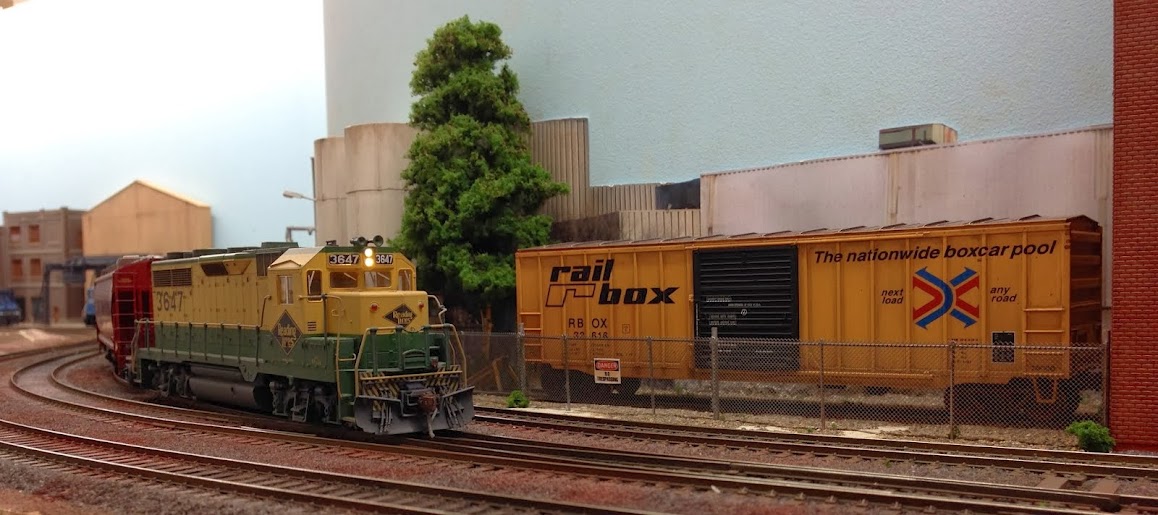Here is the wiring diagram for how I have set up the Lift Out Bridge (LOB) on the JL&T. This is now the second version of the LOB, and it has been realigned and widened to make the track work in this section flow better and allow the installation of THE #8 LH Turnout that will eventually go to the Staging Yard.
The wiring above allows for a safety buffer zone incorporated into the last section of track before the edge of the fascia. So when the LOB is removed it deadens the last 2' - 3' (600 - 900mm) of track work, this way even if a locomotive is running at full speed there is no way they can be launched off the layout onto the floor below.
The small micro switch is the key to the whole idea, it basically takes the positive DCC power for from the main bus and routes it through the micro switch and into the two "safety sections" of track work. When the bridge is removed the switch deactivates and kills the positive power to these two sections.
You can see that when the bridge is in place the lever on the switch is pushed down activating the switch and allowing power to travel through to the positive rails on the safety sections.
Here is the positive wire from the DCC Main Bus running to and from the micro switch...
The positive power from the micro switch feeds into a power block that feeds roughly 3' of mainline feeders to the east and also the power to the feeders along the Paper Mill Siding for about a 1'. This ensures that all the northern approaches are dead if the LOB is removed.
The wiring from here (red & black in the above picture) then runs through a small conduit up and over the main entrance into the layout to the other side were it feeds the opposite side of the bridge
(the safety section only).
The bridge section itself is independently powered straight from the main track bus, it terminates into a quick release plug so that the bridge can be removed for better access.
In the above shot you can also see the cleat that supports the bridge (piece of dressed pine against the rough saw) there are two either side and the LOB is screwed down either end. I prefer screws because they don't really move at all and ensure pretty much perfect alignment of the rail on the track, I will hide these with some small clumps of bushes with a removable piece to access the screw.
So hopefully this helps explain it all, its really quite easy and a very effective method of ensuring that your valuable locomotives and rolling stock don' take that nasty dive off the layout onto the nasty concrete ravine below...
Jas...























